Democratic Candidates Criticize Caucuses
Many of the 2020 Democratic candidates for President are arguing that the caucus process itself is unfair and undemocratic. They're right.
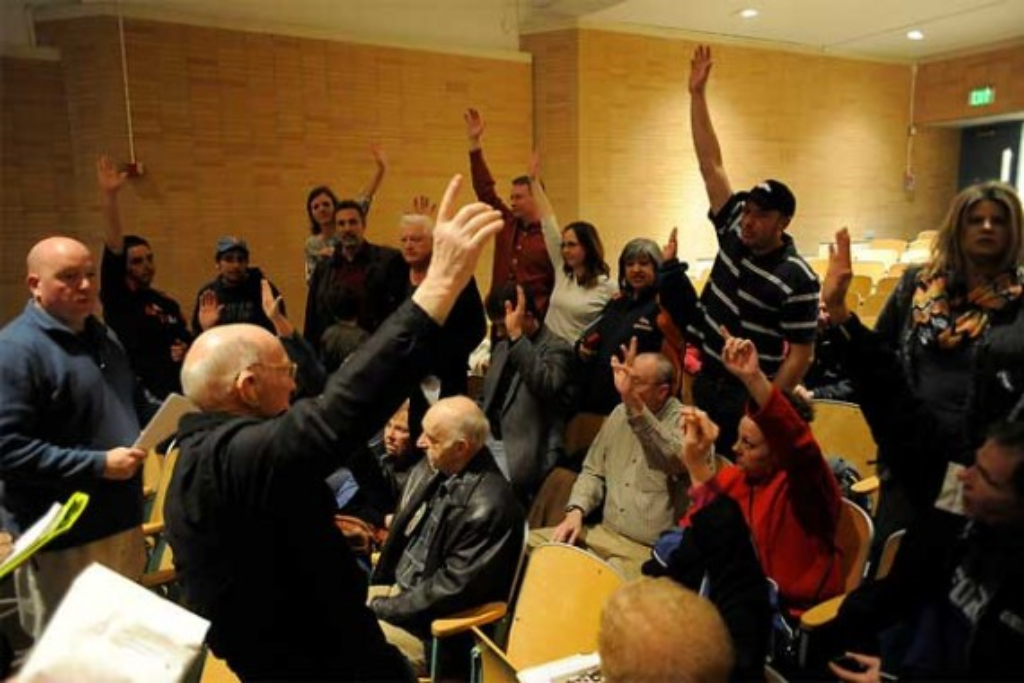
We now stand 78 days away from the quadrennial spectacle known as the Iowa Caucuses. On the night of February 3rd, 2020, Iowa Democrats will gather at schools, American Legion posts, and other locations that the state party has designated as a caucus location. Once there, they will engage in the process of selecting the candidates they will support. Those results will then be turned over to the state Democratic Party for the purpose of allocating delegates to the Democratic National Convention. If history is any guide, the general rule will be that the top three candidates will be seen as the “winners,” and there will be at least one candidate who does surprisingly better than conventional wisdom thought they would.
Under the rules that the Iowa Democrats use, the individual caucuses will be something of a winnowing process rather than the single vote method that Republicans use. Under this process, there is an initial canvas takes place after which only candidates who have gotten at least 15% support will be allowed to proceed to the second round. In between the two rounds, supporters of the top three candidates generally attempt to garner support from the supporters of other candidates. It is the result of the second canvas that gets reported to the state party, and the basis on which the media and other analysts will proclaim who the “winners” and “losers” are.
This is what draws candidates to Iowa every four years, and why all the Democrats are there now. At the same time, though, The New York Times finds very few people willing to defend the whole convoluted process:
Since the 1970s, Iowa has hosted the country’s first nominating contests, with a singular ability to make or break White House hopes. Yet with less than three months to go, the state’s pre-eminent position — and the caucus process itself — is once again taking heat.
Former Vice President Joseph R. Biden Jr. said this week — to an Iowa reporter no less — that the caucuses were not “representative.”
Senator Elizabeth Warren demurred when she was asked at a forum in South Carolina whether the order of the early-nominating states should change because Iowa and New Hampshire were “two of the whitest states in the country.” “Are you actually going to ask me to sit here and criticize Iowa and New Hampshire?” she said. “I’m just a player in the game.”
And Julián Castro, the former secretary of housing and urban development, said Iowa was “not reflective of the United States” and “not reflective of the Democratic Party.” He called for the state to lose its spot at the front of the presidential nominating calendar.
In Iowa, fretting about the caucuses is a quadrennial tradition among Democratic and Republican officials alike. But at a time when leading Democrats have made the fight for ballot access, voting rights and diverse representation core principles, their marquee presidential contest offers none of those elements.
The state is more than 90 percent white, rankling officials and activists who say it does not match the party’s diversity elsewhere. The caucuses take place on a Monday night in frigid early February, disenfranchising Iowans who cannot attend because they have to work, have child care obligations, are disabled or are out of state.
Since the 1970s, Iowa has hosted the country’s first nominating contests, with a singular ability to make or break White House hopes. Yet with less than three months to go, the state’s pre-eminent position — and the caucus process itself — is once again taking heat.
In Iowa, fretting about the caucuses is a quadrennial tradition among Democratic and Republican officials alike. But at a time when leading Democrats have made the fight for ballot access, voting rights and diverse representation core principles, their marquee presidential contest offers none of those elements.
The state is more than 90 percent white, rankling officials and activists who say it does not match the party’s diversity elsewhere. The caucuses take place on a Monday night in frigid early February, disenfranchising Iowans who cannot attend because they have to work, have child care obligations, are disabled or are out of state.
The grumbling reached a roar over the last week, amplified by the possibility that Michael R. Bloomberg might enter the Democratic presidential contest and bypass the four early states, a strategy that if successful could render Iowa irrelevant for good.
After touching off the latest round of Iowa pearl-clutching with a vigorous denunciation, Mr. Castro has continued to speak out against the primary schedule. It has become one of the few avenues for his struggling campaign to receive attention.
“We can’t as a Democratic Party continually and justifiably complain about Republicans who suppress the votes of people of color and then turn around and start our nominating contest in two states that, even though they take their role seriously, hardly have any people of color,” he said.
I have long argued against caucuses and other restrictive means, such as party conventions, for selecting party nominees and choosing delegates to state and national conventions. The primary reasons for this is that, unlike primaries, these processes can easily be manipulated by small groups of unrepresentative activists.
A caucus that’s held starting at 7pm on a weeknight in the middle of winter is obviously going to draw far fewer voters than a primary where the polls are open for twelve to thirteen hours a day and where voters have an opportunity to vote absentee if they aren’t going to be able to make it to the polls on a primary day (as Ed Morrissey discovered in 2012 in Minnesota, there is no such thing as absentee voting in a caucus). Turnout for a primary is often low to begin with, but turnout for a caucus is even worse. Many people don’t have the time to spend two or three hours on a work night sitting in a school gymnasium, firehouse, or meeting hall going through the often tedious process that ends with the (non-binding) straw poll that the cable news networks breathlessly report as the results of the caucus. This is especially true for people who work late or have children. Those who do are going to tend to be older than the electorate as a whole and more committed to a particular candidate than many other voters might be. This is why candidates like Rick Santorum, Ron Paul, and before them Pat Robertson tend to do well in caucus scenarios and poorly in primaries. A committed ideological core in a caucus state can have a far greater impact than in a primary because the people who attend are older, more ideologically committed, and in the case of Republican voters, more conservative than the electorate as a whole. How this helps the party choose a nominee representative of the party that is likely to win in November is beyond me.
One need only look at the numbers to see that this is true.
To take just one example, in 2012, there were 121,052 votes cast in the Republican caucuses in Iowa. Ten months later, Mitt Romney received more than 730,000 votes in the General Election in the same state. In other words, nearly 600,000 potential Republican voters did not participate in the caucuses that year. The numbers for 2016 are similar. In the Republican caucus, there were 186,932 votes cast while the General Election saw 1,566,031 votes cast for all the candidates. (There are no figures in either year for the Democratic caucus because the Democratic procedures in place at the time did not report those numbers.)
In Nevada in 2012 there were only 32,961 votes cast in the Republican caucus while Romney received 463,567 votes in the General Election. In 2016, there were 75,482 votes cast in the Republican caucuses, and 1,135,385 votes cast in the General Election. Again, there are no comparable numbers for the Democratic Caucuses since the party did not report them. Furthermore, it’s worth noting that in both 2012 and 2016, there were more votes cast in the New Hampshire primary than there were in the Iowa caucuses notwithstanding the fact that Iowa’s population is more than twice as large as New Hampshire’s.
The main result of the lower participation rate in caucuses, of course, is that it allows well-organized groups that may not represent the majority of voters to have a larger voice in the process than they arguably should. In Iowa, of course, that group consists largely of evangelical voter who, thanks to the ability to organize through churches and other organization, are able to bring large numbers of people to caucus locations and boost candidate who otherwise probably would not have done nearly as well in a more representative contest. Over the years, that has meant that Iowa has given us candidates such as Pat Robertson, Mike Huckabee, and Rick Santorum, none of whom did very well beyond Iowa in the respective years that they ran for the Republican nomination. This year, this fact that Ted Cruz won Iowa but has largely floundered since then is yet another example of how unrepresentative that state is. Similarly, it’s likely the case that Donald Trump would not have won nearly 46% of the vote last night in a primary, which at the very least would have had an impact on the distribution of delegates which is, of course, the number that really matter going forward. Primaries that have higher overall participation rates would make it harder for these well-organized groups to essentially hijack the process and boost candidates who don’t really deserve it.
Beyond participation, caucuses face other problems that argue in favor of eliminating them for both parties. As one writer pointed out, for example, eight years ago the Democratic caucus rules in Iowa violate what many consider one of the most important aspects of voting in modern America, the secret ballot. Additionally, the fact that votes in a caucus are counted by party officials and volunteers, including at least in Nevada people who are openly caucusing for one of the candidates on the ballot, raises serious questions about ballot integrity and the fairness of the counting process. What’s the point of keeping such an archaic system alive?
If the participation issue wasn’t reason enough to dump caucuses — and for any political party interested in picking a candidate best suited to appealing to a wide variety of candidates, it should be — the extent to which we’ve seen a simple thing like counting the votes screwed up in three states inside of a month in a manner that makes the State of Florida circa 2000 seem positively competent by comparison should be the final nail in the coffin for the caucus system. If we cannot rely on the results that are being reported when they are reported, and not two weeks later when the race has moved on through two or three different states, then there’s no rational reason to give states like Iowa, Nevada, and Maine pride of place in the scheduling process. As I’ve said before on this topic, if they want to be taken seriously they need to abandon a method of choosing candidates that was best suited to choosing a Sheriff in 1912 but clearly isn’t well-suited to picking a Presidential nominee in the 21st Century.
Obviously, whether it is intentional or not caucuses discourage voters from participating in the process by making that participation more difficult, less convenient, and so chaotic that some people may just not bother participating at all. Primary elections may not be perfect but they are clearly much better at giving people the opportunity to participate than caucuses or any other election process, such as a state party convention. For that reason alone, a primary would seem to be far superior to a caucus, especially when it comes to the process of who the next President of the United States will be.
For all of these reasons, it’s good to see many of the top Democratic candidates openly criticize an unacceptable and outdated method of delegate selection is good to see. Many of these criticisms are rooted in leftover concerns about what happened in 2016 when small but well-organized groups of supporters of Senator Bernie Sanders were able to game the system in many states to the point where Sanders won nearly all of the caucus states. As a result of this, and pressure from the Democratic National Committee, many states abandoned their caucus for a full-fledged primary. Kansas is one of those states, and they not only moved to a primary but also instituted ranked-choice voting for the process. This is a vast improvement over the status quo.


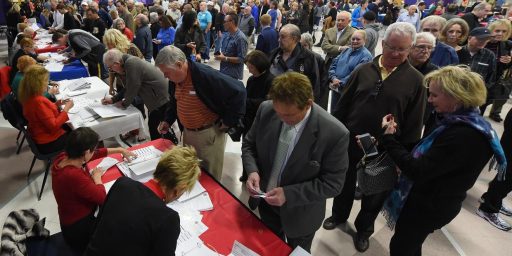
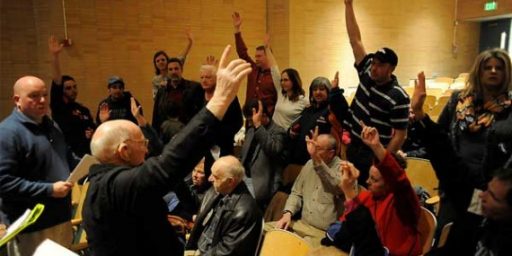
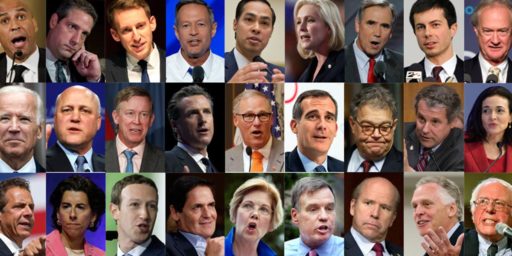
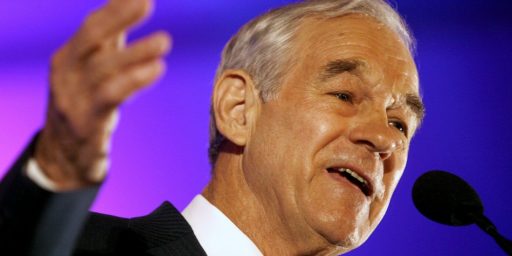
I completely agree. Here’s another data point: in March 2016, 26,345 people participated in the Democratic caucus in Washington State, where Bernie Sanders received 73% of the vote. The state also held a non-binding primary in May 2016. Of the 802,754 people who voted in the Democratic primary, 52% voted for Hilary Clinton.
Because of stuff like this, the state Democratic party is moving to a hybrid system. Voters will vote for the candidates in the primary, and the caucus will be used to decide which delegates go to the Democratic convention. Oh, and they’re switching the months. The primary will take place in March, the caucus in May.
ETA: Doug, did you cut and paste part of this post from an earlier one? Some of your present and past tenses don’t match the current time period.
@Monala:
Yet more evidence that it’s all about the Democrats trying to knee cap Bernie Saunders. Not the will of the people, because then, having a lot of people voting would be better than a lot fewer.
These caucuses evidently use everything from corn hole contests to “rock, paper, scissors” to decide the preferences. No wonder there was such a convoluted outcome last go round.
Replace the current weird, irrational process completely. It’s not clear why the primary shouldn’t be run on a single day in May in all states. If there is no outright winner, the super delegates then get to participate in floor voting at the convention.
But if benefits are seen in a prolonged exercise, pick 10 states at random every four years to hold primaries on the first Sunday in February, repeating the process in each of the subsequent four months. Make the primaries open only to registered party menbers, and make absentee voting as painless as possible. It’s past time to assert that appointment of a president ought to be a national project, not an aggregation of different state processes rooted in the America of the 19th century.